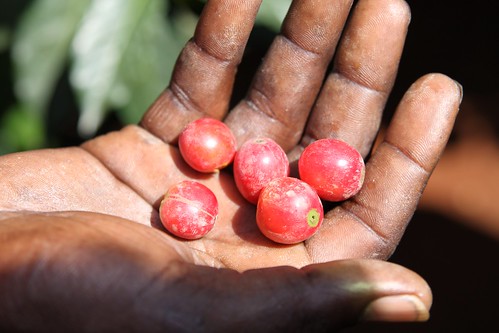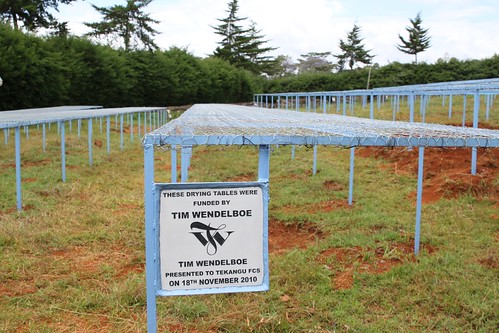I just wanted to give a short update on my recent travel to Kenya. A lot of people have written to me with concerns on my tweets about the coffee quality in Kenya not being as high as last year. I might have tweeted about it a little early as we are hearing now that better coffees are coming in to the mills. But, I will still state that there was very few lots that could match the high quality we saw last year. We even brought our one year old coffees from Tekangu and Ndumberi to cup side by side the new crop coffees and to be honest they cupped better than most of the lots on that particular table.

Still, we did find some fantastic coffees on our trip, especially one lot from Tekangu and one lot from the western part of Kenya which up until now has been a neglected area for coffee connoisseurs. I went on a trip to Eldoret and Mt. Elgon, which is on the boarder of Uganda, together with Kennedy Keya from Dormans and Paul Geshos from Mecca in Sydney and we did see a lot of potential in the area. CMS has already set up a mill in Eldoret to get more of these coffees into the market and to separate the better lots for customers like ourselves. We did cup 2 spectacular lots from Mt. Elgon and decided to buy one of them. I can’t wait to start selling it in 3 months time. More info on that later.
Now, back to the topic. We did see very little coffee coming out of Kenya in the 2010/11 crop. This was due to the bad weather resulting in very little flowers on the coffee trees, hence less coffee on the trees. However it did rain a lot during the expansion stage of the coffee cherries, so the little coffee that was on the trees got a lot of water and nutrients. That is probably why the quality of the coffee that was available last year was very good. I remember coming back with over 15 samples that were all spectacular last year, whereas this year we came home with around 5.
This year the crop was almost 3 times bigger. Which in itself did create some problems during harvest as the harvest was short and drying capacity in many co-operatives was too small due to lack of drying tables.
Morten, from our new sister company Nordic Approach, was in Kenya during the harvest and could report that there was a lot of rain during harvest that also created problems with drying capacity. We did taste a lot of baggy and mouldy coffees this year, which has been rare for my last 4 years visiting. Ernest, the cupper at Central Kenya Coffee Mills suspected the bagginess to come from packing coffee in bags when the moisture content in the beans was still too high. We know that coffee easily gets mouldy if it is not dried efficiently, so it makes sense when you hear the weather has not been on our side.
Another problem Morten reported was that there was a lot of Coffee Berry Disease during the 2011/12 crop. The cherries that were delivered to a lot of Co-operatives were of mixed quality, hence compromising the cup quality. There was also a bumper crop which resulted in more green and unripe cherries being delivered together with the ripe coffee.
So, there are several reasons why the majority of the coffees we tasted in Kenya is not as good as last year. The 2010/11 crop was an exceptional year for quality in Kenya, but the crop was small and that is not great for the income of the farmers. It does not mean there is not great coffees to be found in Kenya this year. We did find some spectacular coffees during our visit, it was just a bit harder to find them.



